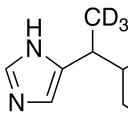Phospholipase C (PLC)ε Promotes Androgen Receptor Antagonist Resistance via the Bone Morphogenetic Protein (BMP)-6/SMAD Axis in a Castration-Resistant Prostate Cancer Cell Line.
Keywords
Abstract
BACKGROUND Primary therapy for patients with advanced prostate cancer (PCa) consists of androgen deprivation therapy targeting the androgen receptor (AR) axis. However, most tumors progress to castration-resistant prostate cancer (CRPC) within 18-24 months. The purpose of the present study was to investigate the mechanisms through which PCa acquires drug resistance after long-term treatment with AR antagonists. MATERIAL AND METHODS Online database analysis and bioinformatics analysis were performed to identify signaling activated during anti-androgen treatment. MTT assay was used to detect cell viability. RT-qPCR was performed to examine the mRNA expression of the indicated genes. Colony formation assay was performed to observe cell proliferation. Transwell assay was conducted to demonstrate invasive ability. Protein levels were determined by Western blot analysis and immunofluorescence assays. RESULTS An online database search and bioinformatics analysis indicated that bone morphogenetic protein (BMP)-6/SMAD signaling was activated in enzalutamide-resistant LNCaP cells. Furthermore, this signaling interaction was experimentally verified in bicalutamide- and enzalutamide-resistant LNCaP cells, which may be regulated by phospholipase C (PLC)ε and induced cell proliferation and invasion. Of note, a positive correlation was observed between PLCε and BMP-6 in CRPC tissue samples, which may promote bone metastasis and suggests a poor prognosis. CONCLUSIONS The present results suggest that targeting of PLCε/BMP-6/SMAD signaling may increase the sensitivity of CRPC to AR antagonists and inhibit tumor progression.


